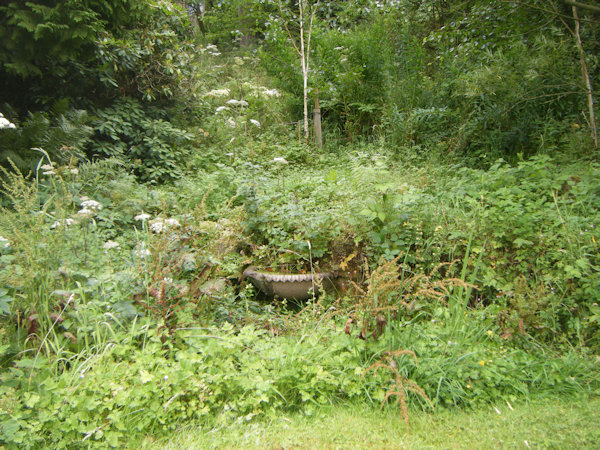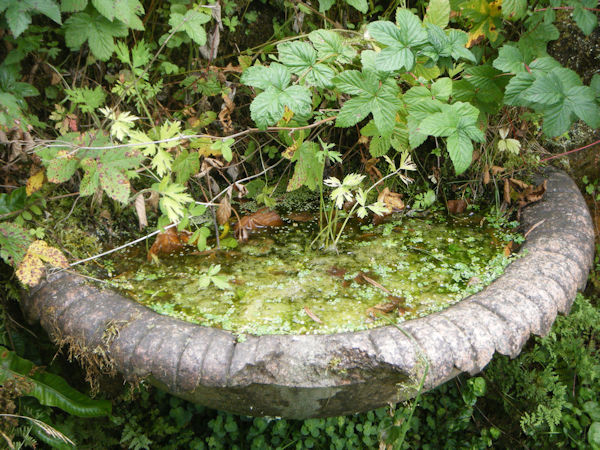 |
Dedication: Saint Baithen? Location: Abbey St Bathans House Coordinates: 55.85078, -2.38346 Grid reference: NT760620 Heritage designation: none |
HOME - SCOTLAND - SCOTTISH BORDERS
 |
Dedication: Saint Baithen? Location: Abbey St Bathans House Coordinates: 55.85078, -2.38346 Grid reference: NT760620 Heritage designation: none |
Very little is known for certain about the origin of this parish's patronage, and there is much speculation in regard to the true identity of "St Bathan". In the New Statistical Account of Scotland, published in 1834, the Rev. John Wallace wrote of four different early medieval figures whose names bear some resemblance to "Bathan", all of whom could, potentially, have given their name to the area. Wallace included on his list St "Bothan", an early "bishop of Dunblane"; St "Bathan", a "bishop or teacher and confessor", who was apparently active "throughout" Scotland, particularly in Shetland and Orkney; St "Baithan", a 7th century Irish bishop; and the 6th century St "Baithen", cousin of St Columba. Wallace strongly believed that this latter saint was the founder of the parish, asserting that "none" of the other three saints "seem to have any claim", and citing as evidence the fact that the oldest known name of the settlement, "St Boythan", is "very similar in sound" to "Baithen". As evidence against the "claims" of the other three saints, Wallace attested that the first lived too late to have founded the church, that the second would not have become patron of a church "in the Saxon kingdom of Northumberland" (which Abbey St Bathan's was originally part of), and that the third was Irish, and therefore unlikely to have travelled so far.
Unfortunately, Wallace's arguments do not really stand up to any scrutiny when it is considered that St Columba's cousin, "Baithen", was himself born in Ireland, at least according to John Turnbull, writing in St Bathan, a piece published in the journal of the Berwick Naturalists' Club in around 1857. Indeed, Wallace himself was adamant that the church of Abbey St Bathans was founded "soon after" the "early part of the seventh century", which would mean that the cousin of St Columba could not possibly be the patron of the parish, this "Baithen" having died, by Wallace's own admission, "on 9th June 598", placing him firmly in the 6th century, and certainly not in the mid 7th. In fact, the four men mentioned by Wallace are not the only possible founders of Abbey St Bathans, the 7th century Bishop of Melrose, St Bothan, being another likely candidate; he is known to have been both active in the area at the right time, and to have given his name to the village of "Bowden", near Melrose. In truth, it is quite possible that any of the above saints founded a chapel or church here, in the late 6th or early 7th centuries.
Nevertheless, it is clear that a medieval cult of St Bathan, whoever he may have been, did exist in this area during the medieval period. Within Abbey St Bathans itself, the existence of a small medieval chapel, which historic Ordnance Survey maps attest was dedicated to the saint, a few hundred metres south of the holy well, in "Chapel Field", suggests that the village once received pilgrims of some description. Slightly further afield, the nearby parish of Yester was originally known, according to John Martine's Reminiscences and Notices of Fourteen Parishes of the County of Haddington (1890), as "St Bothans" or "St Bathans", at least before the Reformation, and Tyninghame apparently once possessed a "religious house" that bore the patronage of the saint. Evidently, St Bathan, whoever he really was, did not only visit Abbey St Bathans, but also travelled to a number of places in the vicinity.
Just like its medieval patron, very little is recorded about the history of St Bathan's Well. The spring undoubtedly had links to the nearby Cistercian priory, which Samuel Lewis, in the first volume of his Topographical Dictionary of Scotland (1846), claimed was founded "between the years 1184 and 1200", and occupied by a small number of nuns until the Reformation. I have not been able to ascertain whether an earlier medieval foundation may once have existed on its site, but it is entirely possible; either way, this early establishment would have been destroyed by the Danes, who Samuel Lewis attests ransacked the area, and "destroyed" the original, likely wooden, church "by fire". It is interesting to note that the land on which St Bathan's Well is located was definitely owned by the convent during the medieval period, and it is probable that the nuns would have erected some kind of elaborate structure over the spring, perhaps even a chapel. The nuns are also said to have used the "Nun's Well", located nearby, as their chief water supply, and do not appear to have used the water of St Bathan's Well for practical purposes at all.
The earliest reference that I have found to the existence of the well, however, dates from the late 18th century, when "a ſpring called St. Bathan's well" was mentioned by the Rev. John Sked in the Old Statistical Account of Scotland, published in 1794. Sked wrote that the holy well "neither fogs nor freezes", and prevented a "dam-lead from Whitadder", which supplied a nearby "corn-mill", freezing up in winter, but did not refer to any local superstitions associated with the site. Indeed, the first mention that I have found of a healing tradition being linked to the spring appears in the New Statistical Account, written in 1834 by the Rev. John Wallace, who expanded upon Sked's statement by reporting on an "ancient" superstition that St Bathan's Well possessed "the power of healing diseases". Unfortunately, Wallace did not specify which ailments the spring was used, in particular, to cure, although it seems quite clear that the well was no longer viewed in this way by the time of Wallace's writing.
Unfortunately, I have found a number of 19th century references to the well, all of which very obviously use both Wallace and Sked as their sources, none of which write more on the subject of the spring's supposed healing powers. For example, Samuel Lewis wrote in his Topographical Dictionary that the well was believed to have "many surprising virtues", but did not explain what these virtues were, or, in fact, what made them surprising. In any case, although the well was no longer believed to possess curative powers, it was evidently viewed with some importance during the late 19th, or very early 20th, century, because it was then that a new structure was built over the spring.
Although it is obvious that the main purpose of this structure was to transform St Bathan's Well into what was then a very modern garden feature, some element of religion was clearly still associated with the spring, because the new structure was inscribed with the 70th psalm, apparently St Bathan's favourite verse, at least according to Adam Thomson, writing in 1908 in Coldingham: Parish and Priory, which contains the earlist description that I have found of this new construction. The best description that I have come across, however, dates from 1910, and was published in the journal of the Berwickshire Naturalists' Club in that year:
|
Within a stone's throw [of the church], at the foot of a steep bank clothed with luxuriant shrubs, is situated St. Bathan's Well, whose clear and cool waters flow into a basin of red granite, surmounted by a canopy on which are engraved the opening words of Psalm LXX.-"DEUS IN ADJUTORIUM MEUM INTENDE." |
A photograph of this structure intact, taken in 1966 by OS surveyors, can be accessed at "Trove.scot", formerly the Canmore database, at this address: https://www.trove.scot/image/2455490. Unfortunately, I am unable to reproduce the image here for copyright reasons.
When I visited St Bathan's Well for myself in August 2025, I found that only a small portion of this structure still survives. The stone Gothic canopy, bearing the inscription of the psalm, had vanished, and all that remained was the "basin of red granite", which was intricately carved, though chipped in one place. The circular pool depicted in the 1966 image was still extant, but its extremities were obscured by undergrowth. Whether the spring is still producing water was not immediately clear, but, if so, then it was evidently not issuing into the granite basin. It is interesting to note that historic Ordnance Survey maps have always described St Bathan's Well as being "covered", so presumably some old pumping equipment, transporting the water to the nearby house, was installed beneath the Gothic structure, all of which presumably still exists. I was pointed towards the well by one of the residents of Abbey St Bathans House, who knew of its existence.
 |
 |
|
Access: The well is located on private land, belonging to Abbey St Bathans House; permission for visiting is to be obtained from there. |
Copyright 2025 britishholywells.co.uk